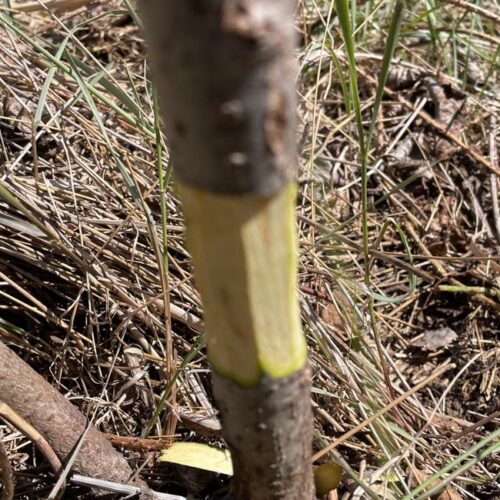Air layering is a fascinating and effective method for propagating new trees from existing ones. Unlike traditional cuttings, this technique encourages roots to form on a stem while it is still attached to the parent plant. This method is particularly useful for plants that are difficult to propagate by cuttings, such as fruit trees, magnolias, and many tropical species. We’ve used this method in the past to propagate a lemon tree.
During the excavation of the natural swimming pond, the excavator accidentally knocked over an apple tree. It was buried under the soil but still alive. Therefore, we used air layering again to give the tree a new purpose.
Air-layering is very simple. You just need a healthy branch of an existing tree. Ideally, the branch should be about the thickness of a pencil and free from any signs of disease or damage. This ensures that the new plant will have the best chance of thriving. Next we make two parallel cuts around the circumference of the branch, spaced about 1 to 2 inches apart. Remove the bark between these cuts to expose the inner woody tissue. This process, known as girdling, disrupts the flow of nutrients and stimulates root development in the exposed area.





